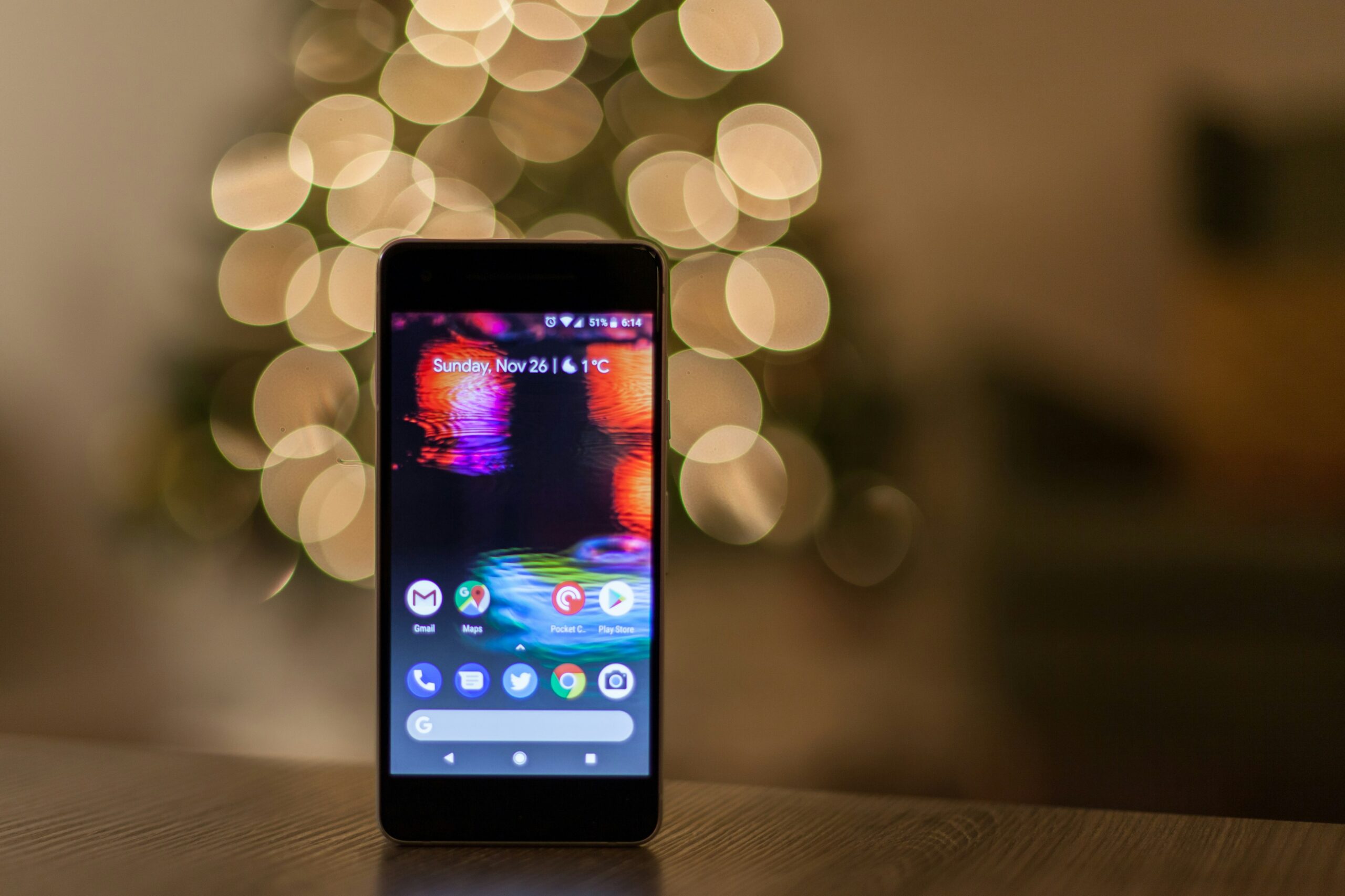Mobile phones have become indispensable tools for communication and information access, particularly for seniors. The ever-growing reliance on technology underscores the necessity of mobile devices tailored specifically for the elderly. Senior-friendly mobile phones are designed with features that prioritize usability, accessibility, and convenience, enhancing the overall quality of life for older adults.
Senior citizens often face unique challenges when it comes to technology. Conventional mobile phones may present hurdles such as small screens, complicated interfaces, and intricate navigation schemes, which can be daunting for those unfamiliar with modern devices. As a result, there is a pressing need for user-friendly devices that cater to the specific requirements of this demographic. Senior-friendly mobile phones typically include larger displays, simplified menus, and clearer text, which can significantly improve the user experience for older adults.
Moreover, these specialized devices often come equipped with accessibility options tailored to the needs of seniors. Features such as voice commands, hearing aid compatibility, and emergency contact functionalities ensure that mobile phones serve as reliable companions for older users. Such functionalities not only bridge the gap between seniors and their loved ones but also empower them to stay connected to the world around them.
In essence, the importance of mobile technology for seniors cannot be overstated. By integrating intuitive designs and accessible features, senior-friendly mobile phones provide substantial support to enhance seniors’ independence and social engagement. As technology continues to evolve, it remains vital that manufacturers prioritize the specific needs associated with aging to create devices that truly benefit older adults.
Key Features to Look for in Senior Mobile Phones
When selecting a mobile phone for seniors, certain features stand out as particularly beneficial. These characteristics can greatly enhance usability, ensuring older users have a positive experience while staying connected.
A comfortable grip is essential for senior-friendly mobile phones. Many older adults may experience reduced dexterity or grip strength, making devices difficult to hold securely. Phones designed with ergonomic shapes or textured surfaces can help prevent accidental drops, providing users with more confidence when handling their devices.
Another important feature is adjustable font sizes. Seniors often struggle with vision impairments, making it critical for their mobile phones to offer customizable text sizes. A device that allows easy scaling of font dimensions can greatly enhance readability, making it simpler for users to read messages, contacts, and important notifications without straining their eyes.
Additionally, simplified menus play a crucial role in making mobile phones more accessible. Complex menus can be overwhelming for seniors, while a device with a user-friendly interface can streamline navigation. Phones that offer a straightforward layout with larger icons and fewer menu layers are ideal for older adults looking for ease of use.
Emergency features also merit consideration. Many senior-friendly mobile phones now include functionalities such as an SOS button or emergency contact shortcuts, providing peace of mind for both the user and their loved ones. These features ensure that help is just a button press away, an invaluable resource in emergencies.
Long battery life should not be overlooked, either. Seniors may forget to charge their phones regularly, so a device that boasts extended battery performance can alleviate concerns about running out of power during crucial times.
Lastly, good sound quality is vital for communication. Many seniors face hearing difficulties, so mobile phones with clear audio output and adjustable volume settings can significantly enhance conversations. These features together create an experience that respects the needs of older users, making mobile technology more accessible and enjoyable.
Top Senior-Friendly Mobile Phone Brands
When it comes to selecting senior-friendly mobile phones, various brands stand out due to their commitment to accessibility and user-friendly features. One of the leading names in this sector is Jitterbug. Known for its simplified interface and large buttons, Jitterbug has tailored its mobile phones specifically for seniors. Their devices often include features like emergency buttons and easy access to customer service, making them a popular choice among older adults and their families.
Samsung also deserves mention, as the company has integrated features that cater to seniors within its broader range of smartphones. With models that provide adjustable text sizes, high-contrast modes, and voice assistant technology, Samsung balances functionality with sophistication. Their commitment to accessibility ensures that older users can enjoy modern mobile technology with ease.
Apple is another prominent player, offering the iPhone, which includes settings specifically designed for senior-friendly mobile phone applications. Features like guided access, voice control, and a clutter-free interface contribute to an overall user experience that promotes independence. The immense support ecosystem provided by Apple, including tutorials and helplines dedicated to seniors, further enhances its appeal.
Other noteworthy brands include Motorola and LG, both of which offer smartphone options packaged with features beneficial for older users. These brands often focus on durability and usability without overwhelming the user, ensuring they can navigate their devices with confidence. While there are various options available on the market, choosing a brand that has shown a dedication to crafting senior-friendly mobile phones is crucial for enhancing user satisfaction.
In summary, recognizing the top brands that offer senior-friendly mobile phones can significantly assist in making an informed decision, ensuring the chosen device aligns with the user’s specific needs and preferences.
Best Senior-Friendly Mobile Phones Available in 2023
In 2023, the market for senior-friendly mobile phones has expanded significantly, offering a variety of devices tailored to meet the needs of older adults. One notable option is the Jitterbug Smart3. This phone is specifically designed for seniors, featuring a large 6.2-inch display and simple navigation. Its standout feature is the 24/7 lifeline service, which provides access to medical assistance at any time. The price ranges around $149, making it a budget-friendly option for families seeking ease of use for their loved ones.
Another excellent choice is the Samsung Galaxy A32. This smartphone is equipped with an intuitive interface and customizable settings that cater to seniors’ preferences. The Galaxy A32 boasts a vibrant 6.4-inch screen and a powerful camera system, making it ideal for capturing memories. With a moderate price point of approximately $280, it strikes a balance between advanced features and user-friendliness.
The Nokia 3310, though not a smartphone, remains a favorite among seniors who prefer a basic mobile phone. It offers a classic design and extended battery life, ensuring that users do not frequently worry about charging. Priced at around $50, it is an economical option for those who desire simplicity in communication without the complexities of modern smartphones.
For those seeking a more feature-rich option, the Apple iPhone SE is another senior-friendly mobile phone worth considering. With its compact design, excellent camera quality, and accessibility features like voice control, it promotes ease of use for older adults. Although priced higher at about $399, it is suitable for tech-savvy seniors looking for a reliable and versatile device.
These senior-friendly mobile phones reflect the growing recognition of the needs of older adults in technology, ensuring that they remain connected to their loved ones and services. It is important to choose a phone that aligns with personal preferences, usability, and support options available.
Adjusting Phone Settings for Seniors
Making mobile phones senior-friendly involves not only selecting the right device but also adjusting the settings to accommodate their specific needs. These adjustments can significantly enhance accessibility and user experience for older adults. One essential modification is the increase in font size. Most smartphones allow users to change the text size under the accessibility settings. By opting for larger fonts, seniors can read messages, notifications, and menus with ease, reducing eye strain and enhancing clarity.
Additionally, adjusting display settings can have a considerable impact. Seniors may benefit from enabling high-contrast modes, which can improve visibility by making text stand out more against the background. This feature can often be found in the accessibility section of the device settings. Furthermore, turning on voice commands and text-to-speech functions can offer seniors another layer of convenience, enabling them to navigate their mobile devices without needing to read small text.
Another crucial adjustment is setting up emergency contacts. This feature allows important contacts to be easily accessible in case of emergencies. Users can typically set up a designated emergency contact through their phone’s settings, ensuring that help can be called quickly without the need to search through the contact list. Moreover, seniors should customize ringtones and notification sounds to ensure they are noticeable without being overwhelming. Choosing distinctive sounds for specific contacts can also help seniors identify who is calling or messaging them, enhancing their communication experience.
By implementing these adjustments, senior-friendly mobile phones can become significantly more manageable and adapted to the needs of older adults. Such modifications enhance not only usability but also the overall confidence of seniors when using their devices, ultimately making technology age-friendly and inclusive.
Popular Apps for Seniors
As technology continues to advance, the importance of mobile applications tailored to the unique needs of seniors cannot be overstated. Senior-friendly mobile phones often come pre-installed with or are compatible with specific apps that enhance communication, health management, entertainment, and social engagement. These applications play a crucial role in promoting independence and ensuring that seniors remain connected with their loved ones.
In the realm of communication, apps like Skype and WhatsApp are invaluable. They provide simple, user-friendly interfaces that allow seniors to make video calls and send messages easily. Such applications not only facilitate conversations with family and friends but also help reduce feelings of loneliness and isolation among elderly individuals. Furthermore, these platforms often offer group chat functionalities, enabling seniors to engage with multiple contacts simultaneously.
Health management is another critical area where senior-friendly mobile phones shine, particularly with the use of apps like MyFitnessPal and Medisafe. These applications assist seniors in tracking their daily health metrics, medication schedules, and fitness goals. By providing reminders and monitoring tools, they empower seniors to take an active role in their health care routines and maintain their independence.
For entertainment, applications such as Netflix or Kindle can enrich a senior’s leisure time. Watching films or reading e-books are excellent ways to stimulate the mind and provide relaxation, thereby enhancing overall well-being. Additionally, puzzle games and brain-training apps, like Lumosity, can contribute to mental sharpness and cognitive functionality.
Lastly, social engagement can be fostered through apps like Facebook and Meetup, where seniors can interact with others who share similar interests. By exploring these popular applications, seniors can fully utilize their mobile phones, ensuring that technology serves as an ally in their daily lives.
Safety Features to Consider
When selecting senior-friendly mobile phones, safety features should be at the forefront of decision-making. These features can greatly enhance the user’s experience and promote peace of mind for both seniors and their families. One of the most effective safety tools is location tracking applications. These apps allow caregivers and family members to monitor the whereabouts of their loved ones, providing reassurance that seniors can be located in case of emergencies or when they require assistance.
Another critical safety feature is one-touch emergency dialing. This functionality enables seniors to quickly contact predefined emergency numbers with the simple push of a button. This is especially important for individuals who may have difficulty navigating complex mobile phone systems. A straightforward interface can make a significant difference in emergencies, ensuring help is just a touch away.
Additionally, many senior-friendly mobile phones are now equipped with advanced fall detection technology. This feature uses accelerometers and motion sensors to detect falls and automatically dial emergency services or designated contacts. This capability is invaluable, as it can alert others if the user is unable to reach their phone after a fall, thereby facilitating quicker assistance.
Health monitoring tools are also becoming prevalent in senior-friendly mobile phones. These can include heart rate monitors, medication reminders, and health tracking applications that provide users and caregivers with critical data. Such features promote proactive health management and ensure that the seniors are following their health regimens, thereby enhancing their overall well-being.
In conclusion, safety features such as location tracking, emergency dialing, fall detection, and health monitoring tools are essential considerations when choosing senior-friendly mobile phones. These features not only enhance usability but also foster a sense of security, ensuring seniors can maintain their independence while staying connected to their support networks.
Tips for Teaching Seniors to Use Mobile Phones
Teaching seniors to use mobile phones can be a rewarding experience that fosters their independence and connectivity. To begin with, it is crucial to simplify the instruction process. Use clear and concise language while avoiding technical jargon. Start by explaining the essential features of senior-friendly mobile phones, such as making calls, sending messages, and accessing contacts. A straightforward demonstration followed by hands-on practice can effectively reinforce these concepts.
Positive reinforcement plays a significant role in encouraging seniors to continue learning. Celebrate small achievements to boost their confidence. For instance, if they successfully send a text message or make a call, express enthusiasm and encouragement. This positive feedback motivates them to explore further capabilities of their mobile devices and reduces the anxiety associated with using new technology.
Moreover, patience is vital when teaching seniors. It is essential to recognize that learning new technology can be challenging, and everyone has a different pace of understanding. Be prepared to repeat instructions as many times as needed, and avoid showing frustration. Instead, remain calm and provide reassurance, ensuring that they feel comfortable asking questions or seeking clarification.
Practice is key; encourage seniors to use their mobile phones regularly. This can be achieved through setting specific tasks, such as calling a friend, using a weather app, or searching for information online. Gradual exposure builds familiarity and confidence, making them more adept at handling their devices independently. Consider recommending mobile phones designed with seniors in mind, as these often feature larger screens and simplified interfaces that enhance usability.
In conclusion, teaching seniors to navigate mobile phones requires a blend of simplified instruction, positive reinforcement, patience, and consistent practice. By following these strategies, seniors can become comfortable with their devices, ultimately encouraging them to embrace technology fully.
Conclusion and Final Thoughts
In the rapidly evolving world of technology, it is essential to recognize the significance of selecting the right mobile device for seniors. Senior-friendly mobile phones offer several advantages, catering specifically to the unique needs of older adults. These phones often feature user-friendly interfaces, larger displays, enhanced audio quality, and simplified navigation, ensuring that seniors can manage their communication with ease.
Throughout this article, we have examined various qualities to consider when choosing a mobile phone for seniors. Prioritizing features such as emergency calling capabilities, straightforward text messaging, and accessibility options can significantly improve the user experience. Furthermore, we have recommended several models that excel in these areas, providing options that suit different preferences and budgets. It is crucial for families and caregivers to take an active role in the selection process, ensuring that the device chosen aligns with the specific lifestyle and comfort levels of their loved ones.
Adopting mobile technology can enhance the quality of life for seniors, facilitating better connections with family and friends, as well as greater independence. With the right senior-friendly mobile phone, older adults can navigate their daily lives more confidently, staying in touch and accessing vital information. By prioritizing communication and support, families can empower seniors to embrace these advancements, creating a more connected and engaged experience. In conclusion, investing in a mobile phone tailored for seniors is not just about technology; it is about enhancing relationships and ensuring safety while fostering independence in an increasingly digital world.



